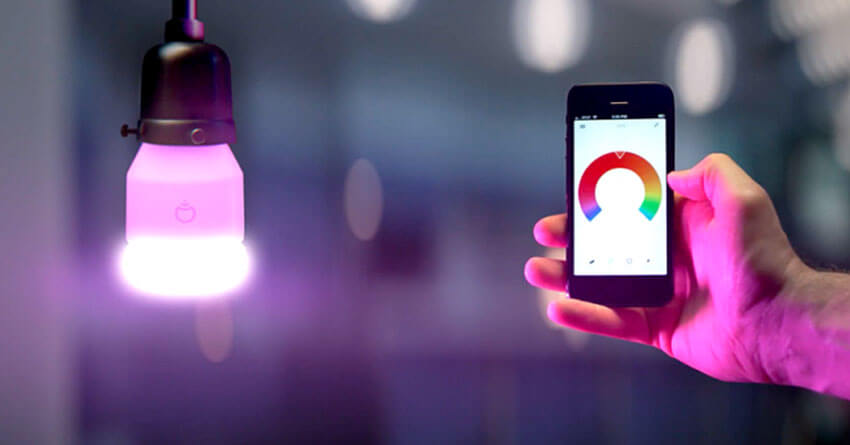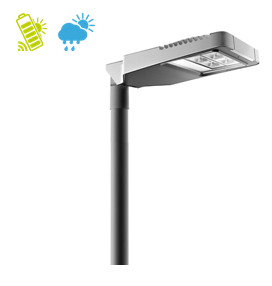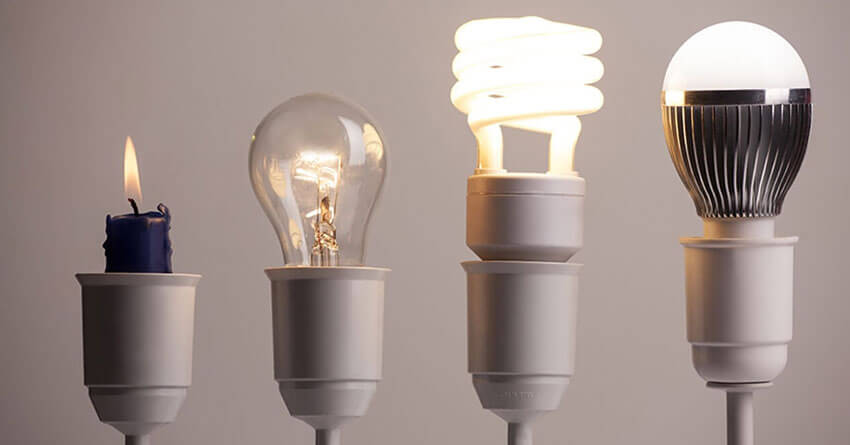Smart speakers like the Amazon Echo and Google Home have brought the dream of a fully automated smart home closer to reality more than ever before. Yet, one question hangs in the air: Do you even need a smart home?
You could get a video doorbell that shows you who’s at the door. But maybe people don’t come to your door that often. You could get a smart thermostat and let it adjust your AC automatically. But maybe your basic, programmable thermostat does the job just fine.
Most smart home gadgets, no matter how useful, tend to appeal to a subset of people, but smart lights are a different story. If you’re frequently moving from the couch to turn off a light, or forgot you left the lights on in a room hours later, it’s easy to imagine how smart lights can improve your life. To nudge your imagination, though, here are a few key benefits.
If you can screw in a light bulb, you can set up “smart” lights
You could probably install a new thermostat if you watched a tutorial on YouTube, but we trust you already know how to screw in a light bulb. The best smart lighting systems, like Philips Hue and LIFX, put all the important electronics in the bulbs themselves, so you can go ahead and use your existing lamps and light fixtures.
Over at Wirecutter, the product review website owned by The New York Times, senior editor Grant Clauser prefers Philips Hue, not just because it’s easy, but because it’s flexible and reliable.
“Among smart bulbs, I prefer Philips Hue because it has a wide ecosystem of products, including basic white bulbs, color changeable bulbs, wireless dimmers, strip lights and outdoor LED lights,” he explained. “Hue lights require a Zigbee gateway, which creates a mesh network in your house that’s more reliable than some of the other smart bulb systems we’ve used. If you don’t want to use the Hue gateway, an Amazon Echo Plus can serve the same purpose, and it also plays music and tells bad jokes.”
Philips Hue requires a smart hub with a relatively simple installation. Plug the box into the wall, press a single button when the app tells you to and you’re good to go. LIFX lights require no hub at all, though they’re a bit more expensive and only as reliable as your Wi-Fi network. For both, most of the setup process takes place in an app on your smartphone. Since you don’t have to modify your home to use them, even renters can get in on the fun.
But the hardest part of getting started with smart lights is altering your light switch habits. For bulb-based lights like the LIFX, you need to leave your light switches on, which takes time to get used to. Fortunately, Philips Hue offers a solution for this. The Smart Dimming Kit lets you stick a switch to your wall to directly control your smart lights. The “switch” is actually a remote, stuck to the wall by magnets, so you can pull it off and use it from the couch if you prefer.
Controlling lights with your voice (or an app) just makes sense
With traditional light switches, you can only turn your lights on and off from one, maybe two spots in a room, and only if you have a free hand. It’s an inconvenience we’ve learned to live with, but there’s an even better way that goes beyond controlling smart lights through your phone. When paired with a voice-controlled smart speaker, the smart lights reach another level.
Walking into a room and your hands are full? Turn the lights on with a voice command. Sitting on the couch and want to turn off the overhead lights? Turn them off with a voice command. Best of all, you can crawl into bed and turn them off once you’re nice and cozy under the covers. When you’re free from the switch, it’s immediately obvious how much voice-controlled lights, again, make a lot of sense.
It even frees you to turn off lights in rooms you’re not in. In the old days, if you remembered leaving the lights on downstairs, you would have to stop what you were doing, run down the stairs, flip the switch and trudge back up. With a cheap smart speaker in your bedroom — or even the voice assistant on some phones — you can control any light in the house without going anywhere.
If you want to put in a little extra effort, Mr. Clauser also suggests automating your lighting tasks. “If there are lights you turn on and off at around the same time every day, you can schedule those actions with smart lights,” he explained.
“I have my porch light on a dusk-to-dawn schedule, with the light brightness automatically fading up and down as the daylight changes. I also like using motion sensors together with smart lights, so when I walk into a room, the lights automatically turn on, and will turn off again after a set amount of time without motion going by.”
The apps on your phone for Philips Hue or LIFX can set schedules, but if you want to automatically turn on lights when you enter a room, you’ll need to buy a motion sensor. Philips Hue, for example, sells its own, or you can get a slightly cheaper one with the Samsung SmartThings platform.
Worry about brightness and color, not wires
If you’re lucky, the light switches in your home might be wired with a dimming switch. If not, your only option to dim your lights would be to pull the switch out of the wall and rewire it, or call someone who could. With the smart bulbs, you can adjust the brightness and even change colors with your phone or by a voice command, all without complex installation. As Mr. Clauser pointed out, this gives you a high degree of flexibility to redecorate your home:
“I love transforming the look of a room by just changing the color of the lighting,” he said. “Sometimes around holidays I place accent lights in corners and adjust the colors to suit the holiday. For regular days, I may adjust the tone of white for a more relaxing or warmer feel, and then brighten it up if I’m doing something that needs more attention, like cooking.”
“You can also set up scenes in the app for different activities, such as a preferred color and tone for reading and a different one for entertaining. Sometimes you just want a red room for a little while. Since LED bulbs last so long, with a standard soft white bulb, you’ll be stuck with that one color for ten years or more. With a color-changing bulb, you can have a new look every time you open the smartphone app.”
Using the same bright, abrasive lights in the evening that you use during the day can throw off your circadian rhythms. Here, smart lights have the potential to dramatically improve your life. You can set your lights to automatically dim or turn off completely during the evening, or set them to ease you into another light for the morning. The cool, blue colors closely match the light of the sun and are ideal during the day, while warmer, more orange colors, like the colors that incandescent light bulbs emit, are ideal for the evening. Smart lights can automatically adjust between color temperatures, that way your eyes are always comfortable and it’s easier to fall asleep at night.
Also, full-color bulbs provide extra fun as decorations for your home. Need some Halloween decorations? Accent the lights to purple or orange to get in a spooky spirit, then as Christmas rolls around, switch to a green and red color scheme. With the push of a button, you can transform the look of your home without hanging a single decoration.
Once you have smart lights in your home, it’s tempting to move on to hooking your thermostat, your doorbell or even your microwave up to the internet. Even if you don’t — and believe us, you don’t have to — smart lights are genuinely useful for just about everyone.
Source: nytimes.com






 India’s LED market is a mix of domestic and foreign players. The players’ share is volatile, as market dominance primarily depends on constant upgradation of innovative technologies.
India’s LED market is a mix of domestic and foreign players. The players’ share is volatile, as market dominance primarily depends on constant upgradation of innovative technologies.

